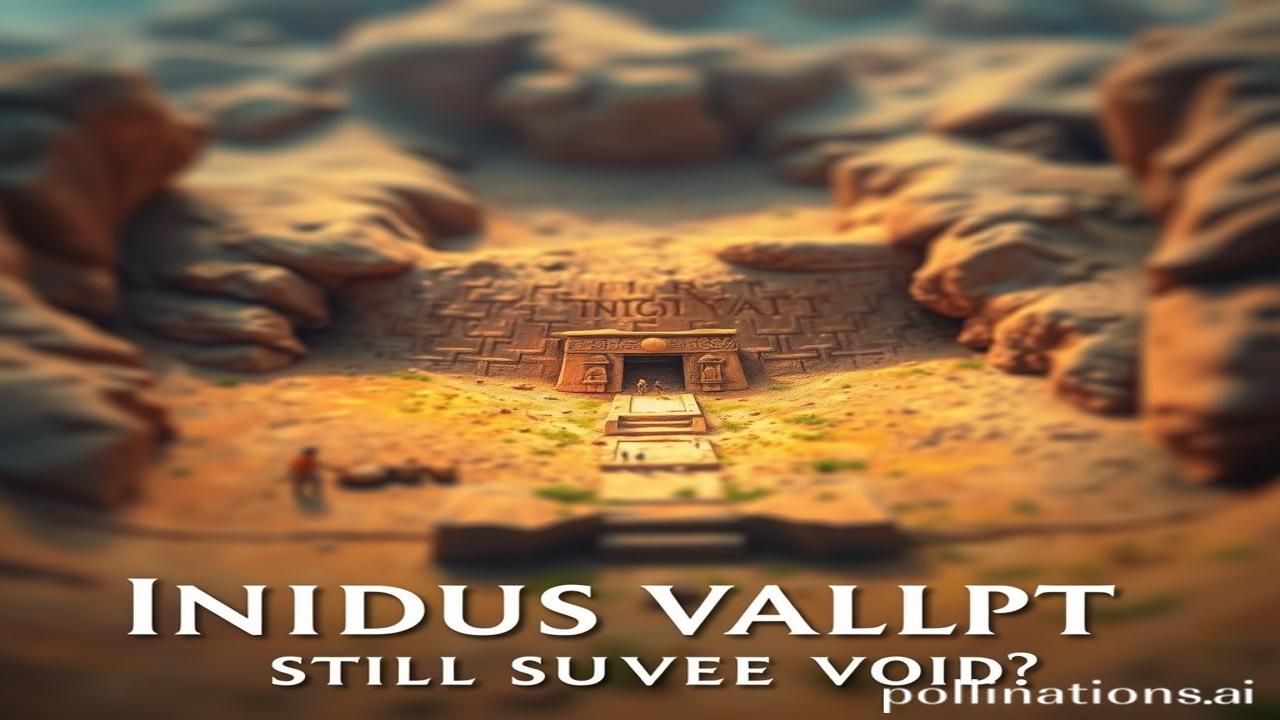Indus Valley Script: Kya Yeh Raaz Kabhi Khulega?
Kabhi socha hai, 5000 saal pehle, jab yeh dharti jawaan thi, tab Sindhu Ghati ki galiyon mein kya sargam bajti thi? Kya aawaaz thi un pyaalon ki jo lassi se bhare hue the? Kya khushboo thi un mitti ke gharon ki jahan sapne bunne jaate the? Waqt ki dhool ne unn kahaniyon ko thoda dhundla zaroor kar diya hai, lekin unki roshni aaj bhi humare dil mein kahin chamakti hai. Aur is roshni ko dhundhne ki ek koshish hai – Indus Valley Script ko decode karna. Ek aisi script jo, afsos, aaj tak unsolved hai.
Indus Valley Civilization: Ek Jhalak Itihaas Ki
Toh, yeh Indus Valley Civilization kya hai? Aur yeh script itni important kyun hai?
Well, Imagine India, around 3300 BCE to 1700 BCE. It wasn’t just small villages. This was a thriving, advanced civilization, spread across what is now Pakistan and northwest India. We call it the Indus Valley Civilization, also known as the Harappan Civilization. Inki planning kamaal ki thi – perfect grid-like streets, sophisticated drainage systems, aur solid, pakki eent se bane hue ghar. Cities like Mohenjo-daro and Harappa were major hubs, with bustling trade, skilled artisans, and a rich cultural life.
Aur yeh script? Yeh unki likhne ka tareeka tha. Hamare paas thousands of inscribed objects hain: seals, pottery, copper tablets – sab pe yeh signs bane hue hain. Lekin yahi toh twist hai. Humne in signs ko ab tak samajh nahi paya.
Zameeni Sach: Sindhu Ghati Ke Log Aur Jeevan
Zara socho… Ma Yashoda subah jaldi uthkar apne ghar ke aangan mein rangoli bana rahi hain. Unke bachche, Ravi aur Sita, mitti ke khilone se khel rahe hain. Unke pita, ek kushal karigar, apni workshop mein ek naya terracotta ka seal bana rahe hain. Mandir mein ghantiyon ki aawaaz goonj rahi hai, aur hawa mein jalte hue dhoop ki khushboo hai.
Rulers nahi the shayad… it was more likely a network of powerful merchants and priests. They traded with Mesopotamia, made beautiful jewelry out of carnelian and lapis lazuli, and cultivated crops like wheat, barley, and cotton. Unke dil mein darr tha flood ka, failure of monsoon ka, aur unjaane dushmanon ka. Lekin unme ummeed bhi thi… ummeed ek behtar kal ki.
Dharohar Aur Pehchan: Aaj Ka Bharat Aur Indus Valley
Aaj bhi, Indus Valley Civilization humari Bharatiyata ka ek important hissa hai. Unke designs, unke motifs, hume textile mein, pottery mein, aur architecture mein dikhai dete hain. The “Dancing Girl” statue from Mohenjo-daro is a symbol of India’s artistic heritage. Aur woh values? Planning, sanitation, community living – yeh sab aaj bhi important hain. Even our reverence for the sacred bull, Nandi, might have roots in the Indus Valley culture. We see echoes of their ingenuity in our modern cities, their artistic flair in our crafts, and their dedication to community in our values.
Mazedar Tathya Ya Bhram-Bhanjak: Truth Behind the Mystery
Log samajhte hain ki Indus Valley script ek alphabet hai. Lekin asli sach yeh hai ki yeh ek logo-syllabic script ho sakti hai. Yaani, har sign ek sound bhi represent karta hai aur ek word bhi.
Ek aur myth hai. Log sochte hain ki Indus Valley log illiterate the. But that’s not true! Unke paas likhne ka tareeka tha, aur unki script standardized thi. It wasn’t just random scribbles; it was a structured system of communication.
Drishya Aur Bhavnaye: Sindhu Ghati Mein Jhakna
Socho… Ganga-Jamuna valley jaisi mitti ki khushboo hai, mix of wet earth and something sweet like jasmine. You can feel the warmth of the sun on the baked brick walls of the houses. Mandir ki ghantiyaan bajti hain aur dhol ki aawaaz har jagah goonjti hai. The touch of a clay seal is cool and smooth in your hand, etched with symbols that whisper secrets of a lost world.
Antim Vichar Ya Uddharan: Khulega Yeh Raaz?
Indus Valley script ka raaz shayad kabhi na khule. But the mystery itself keeps us connected to our past. It reminds us that history is not just about dates and names; it’s about the lives, dreams, and struggles of people who came before us.
“अविज्ञातं ज्ञास्यते, ज्ञातं विस्मृत्यते, एषा हि कालस्य गतिः” – Unjaan jaan jayega, jaana hua bhool jayega, yahi toh waqt ki reet hai. Lekin humari koshish jari rahegi… Because uncovering the past is uncovering ourselves.
